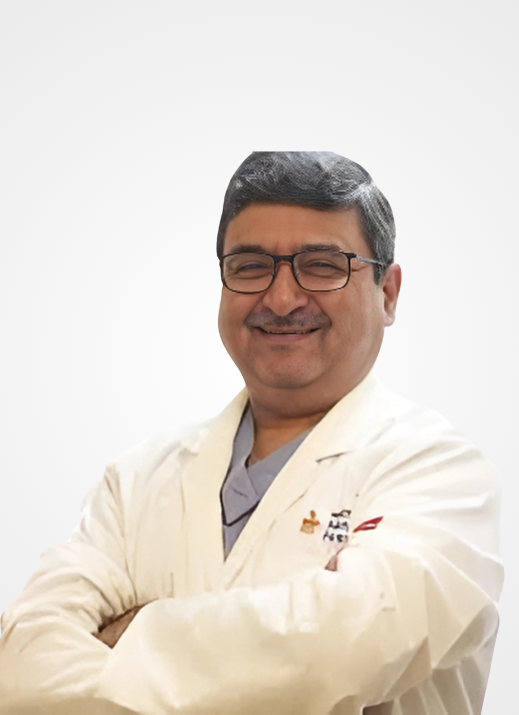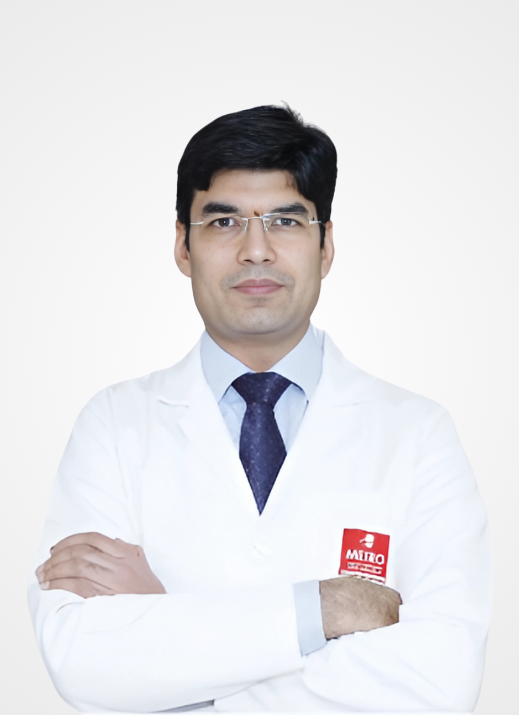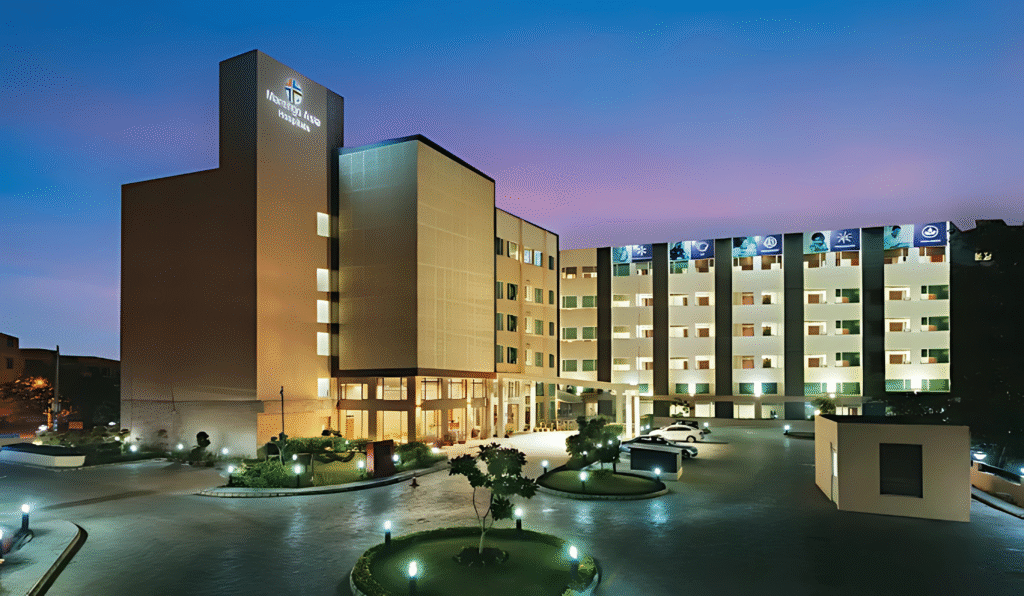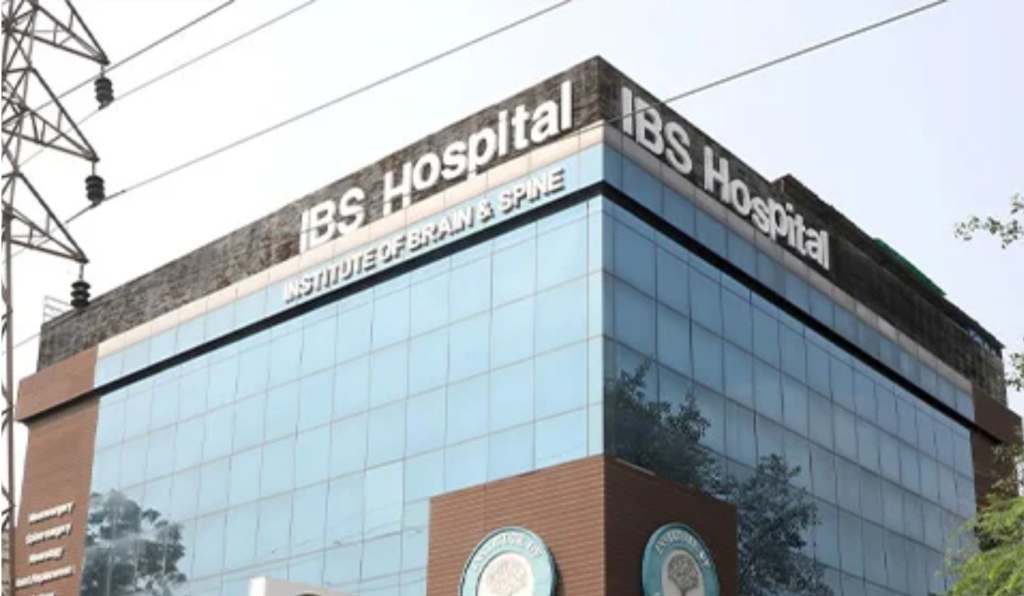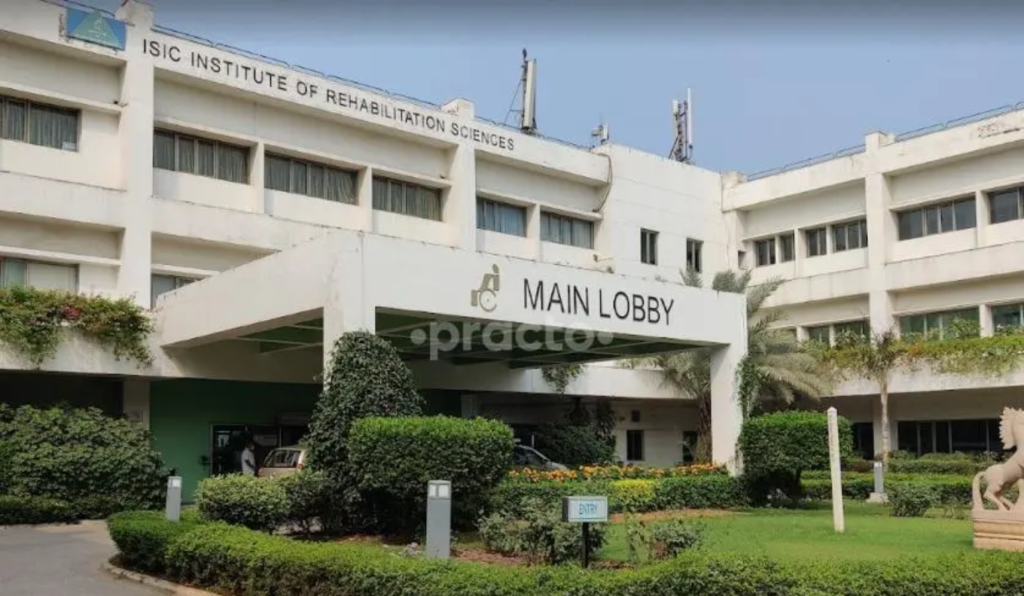Fractures & Bone Injuries Treatment Cost in India

What are Fractures & Bone Injuries?
Fractures and bone injuries refer to any break or damage in a bone due to trauma, overuse, or weakened bone structure. They range from simple cracks (stress fractures) to complete breaks and can affect any bone in the body. These injuries are classified by type—open or closed, displaced or non-displaced, and stable or unstable.
Conditions like nonunion fractures (when a fracture fails to heal) and malunion fractures (where a bone heals in an incorrect position) are serious complications that may require surgical correction. Bone bruises, ligament avulsions, and stress injuries (common in athletes) also fall under this umbrella. Proper diagnosis and timely treatment are essential to avoid long-term complications.
Why We Get Fractures & Bone Injuries?
Fractures and bone injuries typically result from trauma, repetitive stress, or underlying health conditions like osteoporosis. A bone may break partially or completely depending on the force and direction of the injury. While high-impact events such as falls or accidents cause acute fractures, stress fractures develop from repetitive strain over time—common in athletes and military personnel.
In elderly individuals, even minor trauma can lead to fractures due to weakened bones from osteopenia or osteoporosis. Bone injuries might also develop from bone tumors or bone infections, weakening the structure. Improper healing or poor alignment may lead to chronic complications like nonunion or malunion, affecting mobility and joint function long-term.
Causes and Risk Factors of Fractures & Bone Injuries
Fractures and bone injuries occur when the structural integrity of the bone is compromised due to trauma, overuse, or underlying health conditions. These injuries can range from simple cracks to complex breaks that penetrate the skin or affect joint alignment. Understanding the causes and risk factors helps in both prevention and prompt treatment.
Primary Causes of Fractures and Bone Injuries
- Traumatic Events: Falls, car accidents, sports injuries, or direct blows are the most common immediate causes of bone fractures.
- Overuse or Repetitive Stress: High-impact sports or physical labor can cause stress fractures due to repeated force on a specific bone.
- Osteoporosis & Bone Density Disorders: Weakened bones due to low mineral density are more prone to fractures, even from minor movements or falls.
- Congenital Bone Conditions: Disorders like osteogenesis imperfecta or developmental deformities can make bones fragile or abnormally shaped.
Risk Factors Increasing Fracture Susceptibility
- Age: Older adults, especially postmenopausal women, are at higher risk due to declining bone mass.
- Bone Disorders: Conditions like osteoporosis, osteopenia, and metabolic bone diseases reduce bone strength and flexibility.
- Nutritional Deficiencies: Inadequate calcium or vitamin D intake weakens bones, making them more susceptible to injury.
- Physical Inactivity: Lack of weight-bearing exercise contributes to weaker bones and poor balance.
- Certain Medications: Long-term use of corticosteroids and other drugs can interfere with bone regeneration.
- Lifestyle Factors: Smoking and excessive alcohol consumption impair bone health and healing capacity.
Fractures require individualized treatment depending on the type, location, and severity of the break. Early management can prevent complications like non-union, malalignment, or chronic pain.
Symptoms of Fractures & Bone Injuries
Fractures and bone injuries can range from mild to severe, depending on the type and extent of trauma. The symptoms typically appear immediately after an injury but may vary based on the location and severity of the damage.
Pain and Tenderness
One of the first and most common signs is acute, localized pain.
- Sharp or intense pain at the injury site, especially when bearing weight or moving the area.
- Persistent tenderness to touch or pressure.
- Pain may worsen with movement or time if left untreated.
Swelling and Bruising
Soft tissue damage around the bone causes visible changes.
- Swelling or inflammation around the injured site, which can develop within minutes to hours.
- Bruising or discoloration, often purple or blue, caused by internal bleeding.
- Warmth or redness around the injured area due to increased blood flow.
Deformity and Impaired Function
Severe fractures often lead to changes in bone alignment and function.
- Visible deformity or limb misalignment in cases of displaced fractures.
- Inability to move the affected limb or joint properly.
- In compound fractures, protrusion of the bone through the skin may be seen.
Types of Fractures & Bone Injuries
Fractures and bone injuries occur when there is a break or crack in the bone, often due to trauma, falls, or repetitive stress. These injuries can range from minor hairline cracks to severe, displaced fractures. Understanding the types helps determine the appropriate method of stabilization and recovery plan.
The bone is broken but does not pierce the skin. These fractures are usually less complicated and can be treated with immobilization or minor surgery. Healing time varies depending on the location and severity of the fracture but is generally straightforward with proper care.
Involves a broken bone that protrudes through the skin. It increases the risk of infection and requires immediate surgical intervention. Healing time is often longer and may involve multiple procedures, including cleaning, realignment, and hardware implantation.
A small crack in the bone caused by repetitive force or overuse, commonly seen in athletes. These fractures often occur in weight-bearing bones like the tibia or metatarsals. Early detection and rest are crucial to prevent complete fracture or long-term damage.
Greenstick Fracture
Comminuted Fracture
Spiral Fracture
Which Type of Fracture is the Most Dangerous?
Compound (Open) Fractures are considered the most dangerous type of fracture. In this condition, the broken bone pierces through the skin, creating an open wound. This exposes the bone and surrounding tissues to external contaminants, significantly increasing the risk of infection, delayed healing, and complications such as osteomyelitis. Immediate and intensive medical intervention is often required.
Why Choose India for Orthopaedic Treatment?
India has emerged as a global hub for advanced orthopaedic care, attracting thousands of international patients each year. With a unique blend of medical excellence, cutting-edge technology, and cost-effective treatment, India offers unmatched advantages for those seeking relief from joint disorders, spinal conditions, fractures, nerve compression syndromes, and more. Whether it’s a complex surgical intervention or conservative therapy, patients receive world-class care tailored to their individual needs. Here’s why India stands out as a preferred destination for orthopaedic treatments.
India is home to some of the most experienced and internationally trained orthopaedic specialists. Many surgeons have trained in top global institutions and bring extensive expertise in managing complex cases—ranging from osteoarthritis and fractures to congenital and developmental bone disorders.
Indian hospitals offer state-of-the-art facilities equipped with cutting-edge imaging, robotic surgery, arthroscopy units, and minimally invasive surgical technologies. Dedicated orthopaedic departments ensure focused treatment for ailments like spinal disorders, ligament tears, and bone density issues.
India offers world-class orthopaedic care at a fraction of the cost compared to Western countries. Treatment plans—including surgery, rehabilitation, physiotherapy, and follow-ups—are bundled into affordable, transparent packages, making high-quality care accessible to international patients.
Unlike many countries where patients face long waiting periods for orthopaedic procedures, India ensures prompt consultations, diagnostics, and surgeries. This significantly reduces disease progression and enhances recovery outcomes.
India is a global leader in medical tourism, offering:
✔ Dedicated international patient coordinators
✔ Medical visa assistance for easy travel
✔ Affordable accommodation & travel support
✔ Multilingual staff, including English-speaking doctors
This ensures a smooth and hassle-free experience for foreign patients traveling to India for treatment.
Indian hospitals emphasize treatment and post-operative rehabilitation. Personalised physical therapy plans, nutritional counseling, and long-term follow-up care help restore mobility and improve overall quality of life after treatment.
Different Types of Treatments for Fractures & Bone Injuries
Fractures and bone injuries range from simple hairline cracks to complex compound breaks. Treatment depends on the location, severity, and type of fracture. The goal is to restore proper alignment, stability, and function of the bone while minimizing pain and preventing complications like infection or deformity. Here are some common treatment options:
How it Works
Casting immobilizes the broken bone using a hard outer shell (typically made of fiberglass or plaster), allowing it to heal in the correct position without movement.
Prevents movement and keeps bones aligned
Supports healing over several weeks
Often used with realignment or reduction procedures
When It’s Used
Simple or non-displaced fractures
Pediatric fractures or hairline breaks
Post-reduction of dislocated or misaligned bones
Benefits
Cost-effective and non-invasive
Reliable for healing minor fractures
Easy to apply and monitor
How it Works
A stabilizing frame is applied outside the body and attached to bones using pins or screws. It keeps bone fragments in proper alignment during healing.
Temporary or permanent support
Provides stabilization while soft tissues heal
Can be adjusted without additional surgery
When It’s Used
Open fractures or bone breaks with soft tissue damage
Emergency fracture stabilization
Infections or poor bone quality
Benefits
Minimally invasive with no large incisions
Adjustability during healing
Useful when internal fixation is not possible
How it Works
This involves medications and supportive therapies to control pain associated with fractures and bone injuries during healing and rehabilitation.
May include NSAIDs, opioids, nerve blocks
Often combined with immobilization and rehab
Customized based on patient condition
When It’s Used
Acute and post-operative pain
Chronic pain from healing complications
Fractures requiring prolonged recovery
Benefits
Improves comfort and function
Supports faster rehabilitation
Reduces stress and inflammation
How it Works
Physical therapy focuses on regaining strength, mobility, and flexibility once the bone has started healing.
Involves exercises, mobilization, and electrotherapy
Helps rebuild surrounding muscle and tissue
Prevents stiffness and muscle wasting
When It’s Used
Post-fracture immobilization
After surgical intervention
During long-term recovery plans
Benefits
Restores full range of motion
Enhances circulation and strength
Reduces recovery time
How it Works
Bone grafting involves transplanting bone tissue to repair or rebuild bones that are severely fractured or have bone loss.
- Grafts can be from patient (autograft) or donor (allograft)
- Stimulates natural bone regeneration
- Used to fill large gaps or defects
When It’s Used
- Complex fractures that won’t heal with standard treatment
- Non-union or delayed union fractures
- After removal of infected or damaged bone
Benefits
- Supports long-term healing
- Promotes new bone formation
- Useful in both trauma and revision surgeries.
Different Procedures for Fractures & Bone Injuries
Fracture procedures are surgical or minimally invasive interventions aimed at restoring the bone’s anatomical structure and function. Depending on the complexity of the break, the patient’s overall health, and the presence of soft tissue damage, doctors may opt for internal fixation, external stabilization, or cutting-edge techniques like robotic assistance. These procedures not only help in aligning and stabilizing the fractured bone but also minimize the risk of long-term complications such as deformity or immobility.
How It Works
This surgical procedure involves repositioning broken bone fragments (open reduction) and securing them in place using plates, screws, or rods (internal fixation).
Requires an incision to access the fracture
Bone fragments are anatomically aligned
Hardware is implanted for stabilization
When It’s Used
Displaced or complex fractures
Joint fractures that require precise alignment
Long bone fractures like femur or humerus
Benefits
Restores bone structure accurately
Enables faster recovery with early mobilization
Reduces the risk of malunion or nonunion
How It Works
Involves attaching a metal frame to the bone using percutaneous pins or screws, creating an external stabilizing structure.
Used to maintain alignment while the bone heals
Frame sits outside the body
Minimally invasive and adjustable
When It’s Used
Open or infected fractures
Severe trauma with soft tissue damage
Temporary support before definitive surgery
Benefits
Reduces surgical trauma to injury site
Provides excellent fracture control
Allows wound care and easy access
How It Works
A gradual process that uses a special external or internal device to stretch the bone, encouraging new bone growth in the gap.
Bone is surgically cut and distracted over time
Performed using devices like the Ilizarov frame
Promotes regeneration through tension-stress
When It’s Used
Limb length discrepancies
Congenital bone deformities
Bone loss after trauma or infection
Benefits
Stimulates natural bone growth
Corrects deformities without need for grafts
Restores function and symmetry
How It Works
Uses small incisions and imaging guidance to insert screws, plates, or rods without fully exposing the fracture site.
Preserves surrounding muscles and tissues
Reduces surgical trauma and blood loss
Faster recovery than traditional methods
When It’s Used
Stable or semi-stable fractures
Fractures near joints
Elderly patients or those with comorbidities
Benefits
Less post-operative pain
Quicker rehabilitation
Lower risk of infection or scarring
How It Works
Employs computer-guided robotic systems to perform precision-based fracture repair procedures with minimal human error.
Preoperative imaging maps the fracture
Robotic arms assist the surgeon with accurate alignment
Enhances control during internal fixation
When It’s Used
Complex joint fractures
Spine and pelvic fractures
Revisions or multiple fracture corrections
Benefits
Greater surgical accuracy
Reduced operative time
Shorter hospital stays and better outcomes
Focal therapy targets only specific cancerous areas in the prostate while preserving healthy tissue. It includes treatments like:
HIFU (High-Intensity Focused Ultrasound) – Uses sound waves to destroy cancer cells.
Cryotherapy – Freezes cancerous tissues to eliminate tumors.
Laser Therapy – Uses light energy to destroy cancer cells.
Benefits:
✔ Fewer side effects compared to surgery or radiation
✔ Maintains urinary and sexual function
When It’s Used:
✔ Patients with small, localized tumors
✔ When standard treatments are not suitable
This procedure removes lymph nodes near the prostate to check if cancer has spread beyond the gland. It is usually done during radical prostatectomy or as a separate procedure.
Benefits:
✔ Helps determine cancer stage
✔ Reduces the risk of cancer spreading
When It’s Used:
✔ High-risk prostate cancer cases
✔ When lymph node involvement is suspected
Other Advanced Procedures and Costs
As technology continues to evolve, advanced procedures have emerged to address complex and high-risk fractures with better precision, reduced complications, and quicker recovery times. These procedures go beyond traditional methods, offering highly specialized approaches for patients with challenging bone injuries, especially in cases involving nonunion, infection, or underlying bone disorders like osteoporosis.
How It Works
A metal rod (nail) is inserted into the central canal of a long bone, such as the femur or tibia, to stabilize the fracture from within.
Nail spans the length of the bone internally
Locks in place with screws at both ends
Minimally invasive with fluoroscopic guidance
When It’s Used
Long bone fractures (femur, tibia, humerus)
Comminuted or segmental fractures
Pathological fractures due to weakened bone
Benefits
Strong internal support with early weight-bearing
Small incisions reduce recovery time
Minimizes damage to surrounding tissues
How It Works
This involves surgically cutting the bone and slowly pulling the two segments apart using an external device to regenerate new bone in the gap.
Stimulates natural bone growth
Requires regular adjustments to external fixator
Ideal for large bone gaps
When It’s Used
Large bone loss from injury, infection, or tumor
Nonunion or failed previous surgeries
Limb reconstruction in congenital deformities
Benefits
Regenerates bone without grafts
Corrects alignment and restores limb function
Long-term solution for complex defects
How It Works
Advanced imaging is used to design and manufacture patient-specific implants for bones with unique geometry or extensive damage.
3D imaging scans the injury
Titanium or biocompatible material is printed
Implant is surgically placed with precise fit
When It’s Used
Irregular or critical-size bone defects
Reconstruction after tumor removal
Complex trauma cases with bone loss
Benefits
Perfect anatomical fit improves outcomes
Reduces implant failure risk
Can be combined with regenerative techniques
How It Works
Non-invasive devices use electrical or low-intensity ultrasound signals to stimulate bone healing and improve regeneration.
Applied externally over fracture site
Enhances cellular repair mechanisms
Typically used as adjunct to surgery or cast
When It’s Used
Nonunion or slow-healing fractures
Patients with risk factors like diabetes or smoking
Supplement to conservative treatment
Benefits
Painless and easy to use at home
Improves healing time
Reduces need for revision surgery
How It Works
AR overlays digital visuals onto the surgeon’s field of view during the procedure, improving real-time anatomical orientation and precision.
Combines imaging data with AR headset or screen
Enhances intraoperative planning and execution
Helps avoid critical structures
When It’s Used
Complex fracture reconstructions
Pelvic, spine, or joint injuries
High-risk anatomical zones
Benefits
Reduces surgical errors
Improves outcomes in complicated cases
Promotes minimally invasive techniques
Best Doctors for Fractures & Bone Injuries Treatment in India
Best Hospitals for Fractures & Bone Injuries Treatment in India
Med Travel India Offerings
How does Med Travel India help you?
Med Travel India is dedicated to assisting international patients in accessing high-quality Orthopaedic treatment in India. We ensure a seamless medical journey from selecting the best hospitals to providing logistical support. Our team works closely with top doctors and healthcare facilities to offer personalised treatment plans tailored to each patient’s condition.
We take care of every aspect of medical travel, allowing patients to focus solely on their recovery. Below is a list of services provided by our company:
Services offered by Med Travel India

Seamless Planning for Your Medical Journey
Before you even arrive, we take care of all the groundwork. From connecting you with top specialists to ensuring all necessary medical evaluations are completed, we make your journey stress-free. Our goal is to provide clarity and comfort before your treatment begins.
- Free Medical Consultation
- Personalized Treatment Plan
- Estimated Cost & Duration
- Visa Assistanc
- Second Opinion Service
- Pre-Arrival Coordination
Worry-Free Travel & Comfortable Stay
We ensure that your journey to India is as smooth as possible. From booking your flights to arranging a comfortable stay near your hospital, we handle everything so you can focus on your health.
- Flight Booking Assistance
- Accommodation Booking
- Airport Pickup & Drop
- Language Interpretation Services
- Local Transport Arrangements
- Currency Exchange Support


World-Class Medical Care, Personalized for You
We ensure that your medical treatment is well-organized and efficient. Our team works closely with hospitals to facilitate smooth admissions, consultations, and procedures, ensuring you receive top-quality healthcare.
- Priority Appointment Scheduling
- Direct Hospital Admission
- Specialist Doctor Assignment
- Pharmacy & Medical Supplies
- Hospital Admission & Discharge Support
- 24/7 Customer Assistance
Continued Support for a Speedy Recovery
Your health journey doesn’t end after treatment. We provide post-procedure assistance to ensure a smooth recovery, whether you stay in India for rehabilitation or return home.
- Post-Surgical Care Coordination
- Rehabilitation & Physiotherapy
- Virtual Doctor Consultations
- Diet & Lifestyle Guidance
- Extended Stay Arrangements
- Post-treatment Medical Supplies


Beyond Healthcare, A Comfortable Experience
We offer additional services to make your stay in India comfortable and enriching, ensuring that your well-being is cared for beyond the hospital.
- Medical Insurance Settlement Help
- SIm Card Assistance
- Customized Sightseeing Tours
- Medical Document Assistance
- Personalized Assistance for Family Members
- Concierge Services
Reviews From Our Patient














